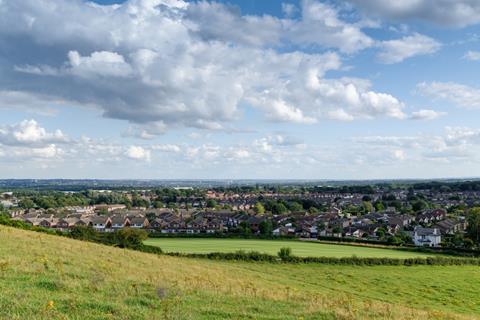Crest Nicholson exec said the likelihood of farmers trousering £1m per acre is “an illusion”

A leading housebuilder has rebutted claims that the sums pocketed by landowners who sell to developers have ballooned in recent years.
Chris Tinker, chairman of major projects and strategic partnerships at top 10 housebuilder Crest Nicholson, told a Labour party conference fringe meeting organised by the Town and Country Planning Association (TCPA) on Sunday evening that the value of agricultural land per acre has remained stable since he joined the company in the late 1980s.
He said: “I have paid landowners £100,000-£150,000 gross since the day I joined Crest to today. The values haven’t gone up and the economics of planning genuinely extracts everything.”
Developers and owners have faced increased pressure on the issue from the Labour Party, which has promised to set up a Sovereign Land Trust with powers to force the sale of sites at cut-price rates.
But Tinker said that while greenfield sites are generally worth £1m-£1.5m once planning permission has been granted, much of this is swallowed up by infrastructure and policy related costs.
The costs of furnishing infrastructure, such as roads and sewers, costs around £400,000 with cross-subsidy for affordable housing costing a similar sum.
In addition, he said developers had to factor in £300,000 for section 106 contributions on the basis that each dwelling will typically attract a £20,000 charge.
Tinker said: “We are a piggy in the middle. It’s a challenging area but don’t be under any illusion that the farmer who gets planning permission gets a £1m per acre,” he said.
The question of whether the landowner should only get the agricultural value of the land, as was the case when the new towns were being developed in the post war era, is “a matter of public policy,” Tinker said.
It also made more sense for developers to spend money on improving the energy efficiency of existing housing stock, Tinker said, rather than building new homes to the highest environmental standards.
“There comes a point when rather than invest £1,000 in a modern house to make it ultra-efficient it would be better to invest it in a fund to address some of the shortcomings of the existing housing stock, which is not well insulated.
“This is a grown-up conversation about what it’s going to cost to turn whole housing stock into a lower carbon world rather than just the new housing stock,” Tinker added.
And he said that the greening of the electricity grid means that scheme-specific decentralised renewable energy schemes, like combined heat and power plants, could soon be redundant.
Tinker said: “We’ve made great strides in greening the grid. We’ve put quite a number of renewable schemes into projects.
“I would like to think one day they will become redundant because the grid will be very green, and you have all the localised management charges which are very inefficient.”
As an example, running CHP schemes generated cheap energy but were expensive to manage, Tinker said. “When you add the two together it is quite difficult to make it work below the level of the grid.”
Fiona Howie, chief executive of the TCPA, called for Homes England to be given a stronger steer to carry out regeneration projects.
She said: “While we want new homes, we also need to address the quality of existing housing stock. At the moment so much of their focus and funding is on new homes because of the emphasis on numbers and we think there is huge need for helping communities to thrive.”











No comments yet